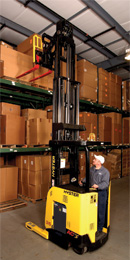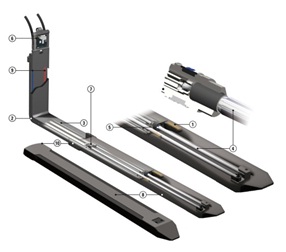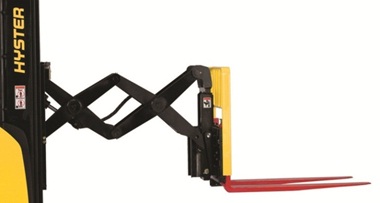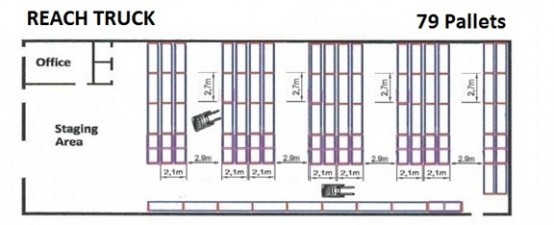What is Double-Deep Racking - Warehouse Racking Guide: Part 3
What is Double-Deep Racking? Part 3 of this guide focuses on the basics of Double-Deep Racking. We will look at the key features of double deep racking & analyse the key advantages and disadvantages.
Remember before purchasing warehouse racking talk to your forklift provider. They will be able to provide you with expert knowledge on layout and what equipment and racking will suit your needs best.

Double Deep is similar to selective racking; but pallets are now stored two rows deep instead of one. This type of racking therefore requires specialised pallet handling equipment using ether a specialised forklift or a standard unit a with double deep handling attachment.
The most common forklift used for double-deep handing is a reach truck. One key disadvantage with reach trucks is that they require a counterbalance for loading and unloading the pallet onto trucks, which can double capital investment requirements for your pallet handling equipment.
Another Option is articulated forklifts which are able to work in double deep narrow aisles while still doing the job of a counter balance.
Double Deep: Pallet Handling Options
Hydraulic/Telescopic Attachments:
Perfect for handling Double-deep racking; this attachment allows any non-pantograph forklifts to be used to handle double deep pallet racking. Hydraulic pumps move the forks/tynes in or out; controlled by the forklift operator, allowing stock to be placed into the second row of a double deep racking system.
Advantages
- Lowers capital investment compared to scissor & pantograph masts.
- Reduces required aisle width when compared to manual fork extensions
- Increases handling of pallets and reduces stock damage compared to manual fork extensions.
- Clear visibility, no extra obstructions because of all extra moving parts of the scissor reach system.
Disadvantages
Reduces forklift lifting capacity

Pantograph/Scissor mast trucks:
Pantographic reach trucks are dedicated trucks designed for double deep pallet stacking. They ensure faster operating times compared to hydraulic fork attachments
Advantages
- Reduced aisle-widths
- Faster pallet handling times.
- Reduces pallet damage, due to smoother operation
Disadvantages
- Requires Counter-balance trucks for unloading and loading freight trucks.
- Reduced visibility when compared to Hydraulic forks.
- High capital investment

Layout
Double-Deep Racking is two pallet deep configuration pallet racking. This means a maximum of four rows can be placed back to back.

Pallet Access (LIFO)
Double-Deep is Last In First Out (LIFO). This type of racking reduces the amount of accessible stock keeping units (SKU’s) due to 50% of SKU’s being behind pallets when storage locations are at full capacity. Can increase pallet storage by as much as 10-15% depending on racking layout.
Double-deep is better suited to stock that has a medium to long term shelf life. Highly perishable goods aren’t recommended for this style of racking due to LIFO racking type.
Douple-Deep Racking Advantages & Disadvantages
Advantages
- Increased storage capacity compared with Selective Racking
- Medium to low storage system.
- Can increase pallet storage by as much as 10-15% depending on racking layout.
Disadvantages
- Reduced SKU’s accessibility
- LIFO inventory management.
- Special trucks required.
Forklift Racking application guide:
Counter-Balance
- Aisle widths – 3.8 to 5.5m (Wide aisles)
- Storage area – 45%
- Operating aisle area – 55%
- Lift height – up to 8m
Reach Trucks
- Aisle widths – 3.0 to 3.5m (medium aisles)
- Storage area – 55%
- Operating aisle area – 45%
- Lift height – up to 11.4m
Articulated Forklifts
- Aisle widths – 1.8-2.2m (narrow aisles)
- Storage area – 65%
- Operating aisle area – 34%
- Lift height – up to 12m